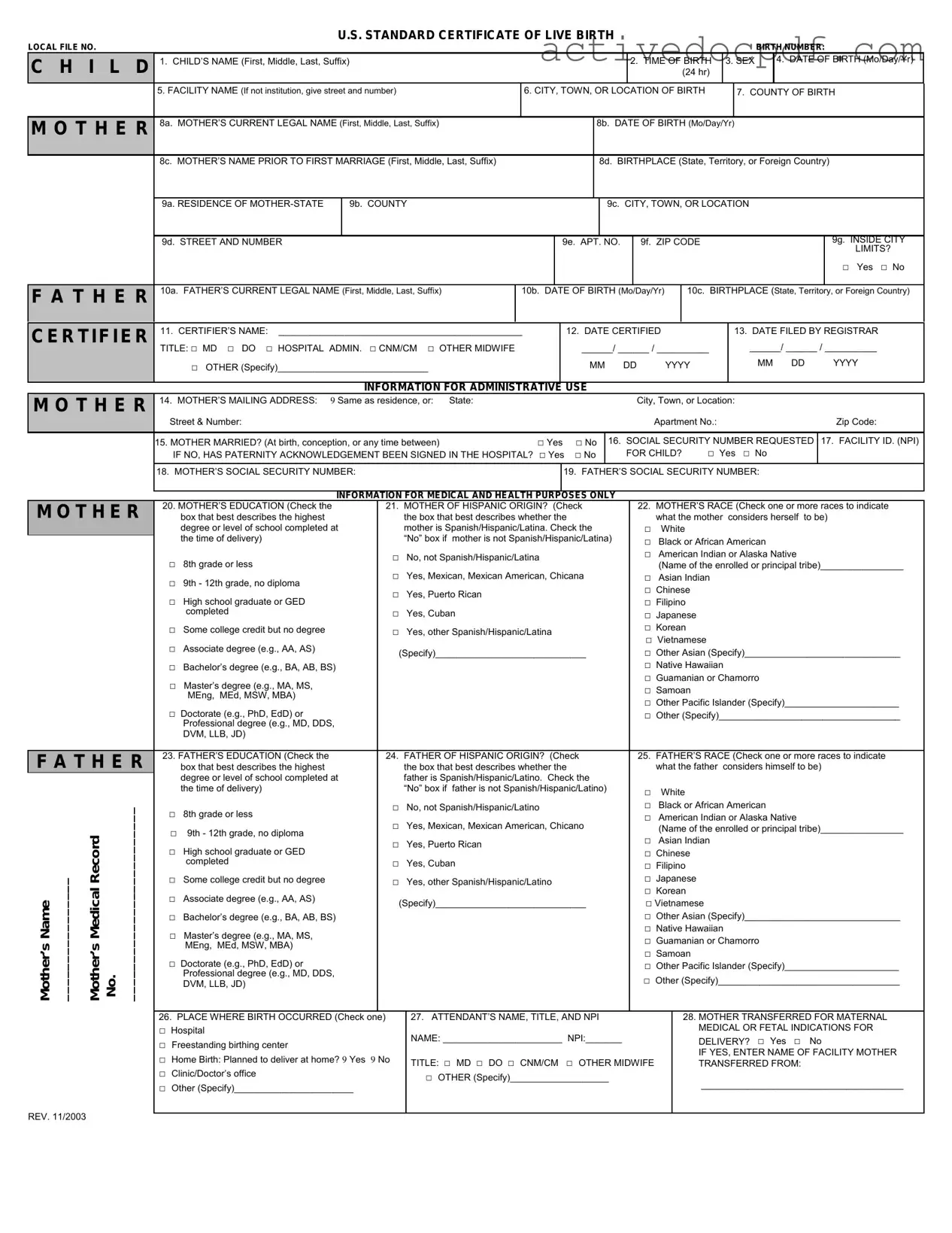Guide to Filling Out CDC U.S. Standard Certificate of Live Birth
Completing the CDC U.S. Standard Certificate of Live Birth form is an important step in documenting the birth of a child. Accurate information is essential, as this certificate serves as an official record for various legal and administrative purposes. Below are the steps to guide you through filling out the form correctly.
- Begin by obtaining the form from your local health department or the CDC website.
- Write the full name of the child as it will appear on the certificate.
- Fill in the date of birth, including the month, day, and year.
- Indicate the time of birth, specifying AM or PM.
- Provide the place of birth, including the city, county, and state.
- Enter the child’s sex as either male or female.
- List the full names of both parents. Include the mother’s maiden name.
- Complete the section regarding the parents' places of birth, including the city and state for both.
- Provide the parents' dates of birth.
- Fill in the parents' marital status at the time of the child’s birth.
- Include the parents’ occupations and the names of their employers.
- Sign and date the form where indicated, ensuring that all information is accurate and complete.
Once you have filled out the form, review it carefully for any errors or omissions. After ensuring that all information is correct, submit the form to the appropriate local authority to obtain the official birth certificate.
